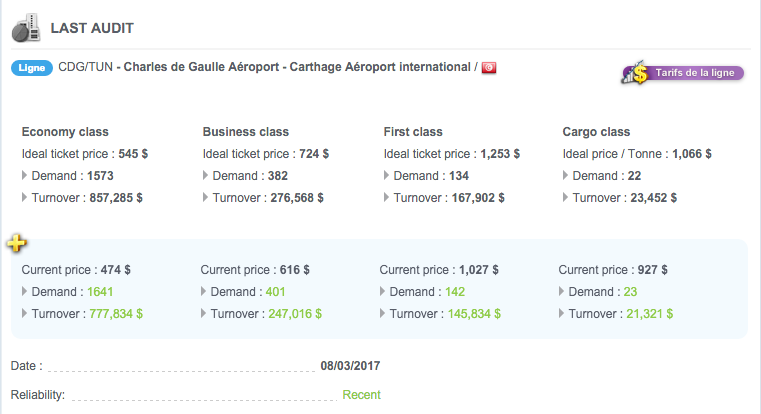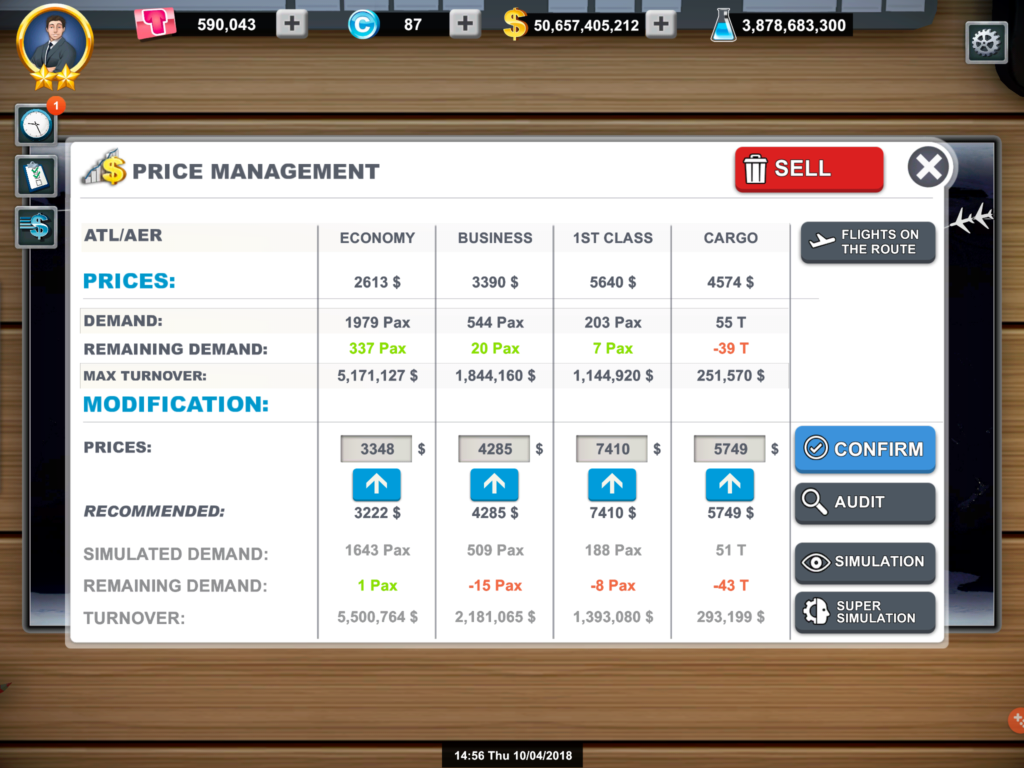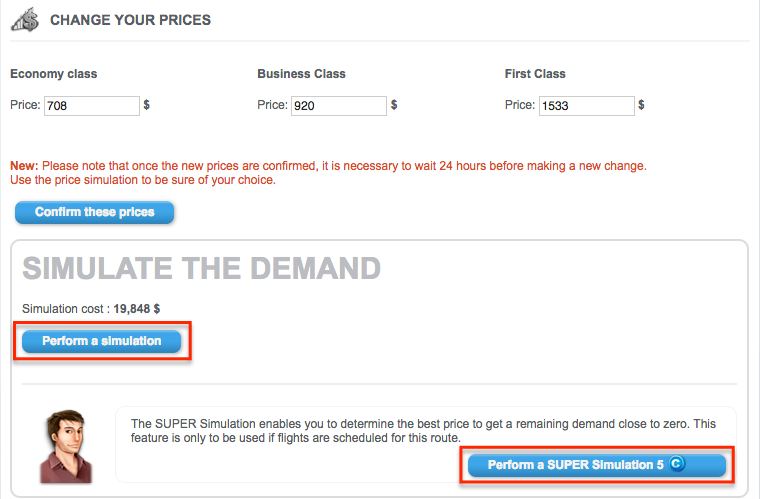This post is also available in:
 Français (French)
Français (French)  Español (Spanish)
Español (Spanish)
The internal audit enables you to know the ideal price of a route and represents the ideal price to reach the maximum turnover if the demand is completely met.
The ideal price is an indicative value. Setting the price above the ideal price generates more revenues for each aircraft flying on the route but it will reduce the number of passengers who want to travel on it and you will have to invest in the purchase of new routes more regularly.
Setting the prices below the ideal price increases the passenger demand but it reduces the profitability of your aircraft; it is not recommended. Thus we can consider the ideal price as the minimum price to apply to your routes.
List of internal audits
The list of audits provides some information to help you better manage your airline:
- Code: the IATA code of your route to identify it.
- Ideal price: if you have already performed an audit, you can find the ideal price for each class here.
- Current price: AM+ account holders can see the current price of the route and thus compare the ideal price with the current price in a simple way. This comparison can help you find anomalies in your price management or estimate your room for maneuver to increase the demand (when prices are much more higher than ideal prices).
- Reliability: the reliability of an audit indicates its degree of accuracy. Sometimes an audit may become less reliable if you change some of your airline characteristics or if a lot of time has passed since your last audit.
- Details button: this button representing a magnifying glass enables you to view the details of a route audit (see below).
- Checkbox: you can perform an audit on several routes at the same time by checking several checkboxes and clicking on the “Perform a massive audit” button at the bottom of the page.

Detail of an internal audit
The audit’s detail section shows the following information:
- Ideal ticket price: the ideal price for each passenger class (see above the ideal price definition).
- Demand: the demand of the route if the ideal price was applied.
- Turnover: turnover of the route if the ideal price was applied and the demand was completely met.
————
- Current price: AM+ members can see the price currently applied to the route here.
- Demand: AM+ members can see the current demand for the route here.
- Current turnover: visible for AM+ members
———–
- Date: date of the last audit performed on the route.
- Reliability: the reliability of an audit indicates its degree of accuracy. Sometimes an audit may become less reliable if you change some of your airline characteristics or if a lot of time has passed since your last audit.

Simulation and SUPER Simulation
If you want to verify what is the effect of your price changes, you can “simulate” your demand. There are two types of simulation:
- The “Simulation”:
In this cas, you will type the prices you want to apply to your routes, but instead of confirming, you will choose “Simulation” (see screenshots below). Thus, without having to wait several days and taking any risk, you can immediately see the your changes’ effects and readjust them if necessary.
The Simulation costs a certain amount of Dollars.
- The “SUPER Simulation”:
The SUPER Simulation enables you not to perform several Simulations. In this case, you can immediately find the best prices to obtain a demand close to zero.
It costs a certain amount of Dollars and 5 AM Coins.


